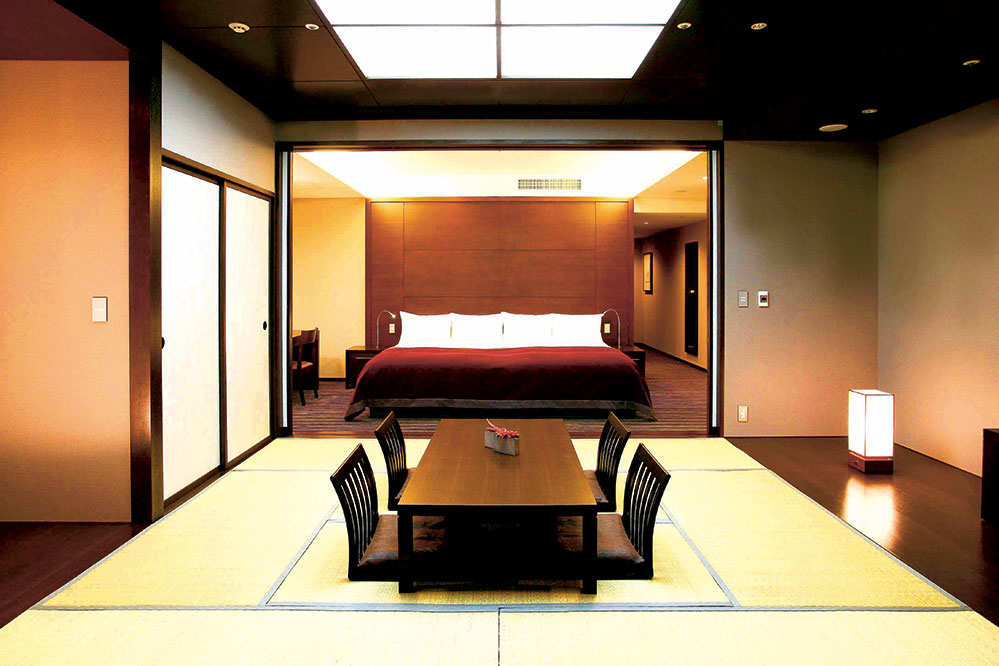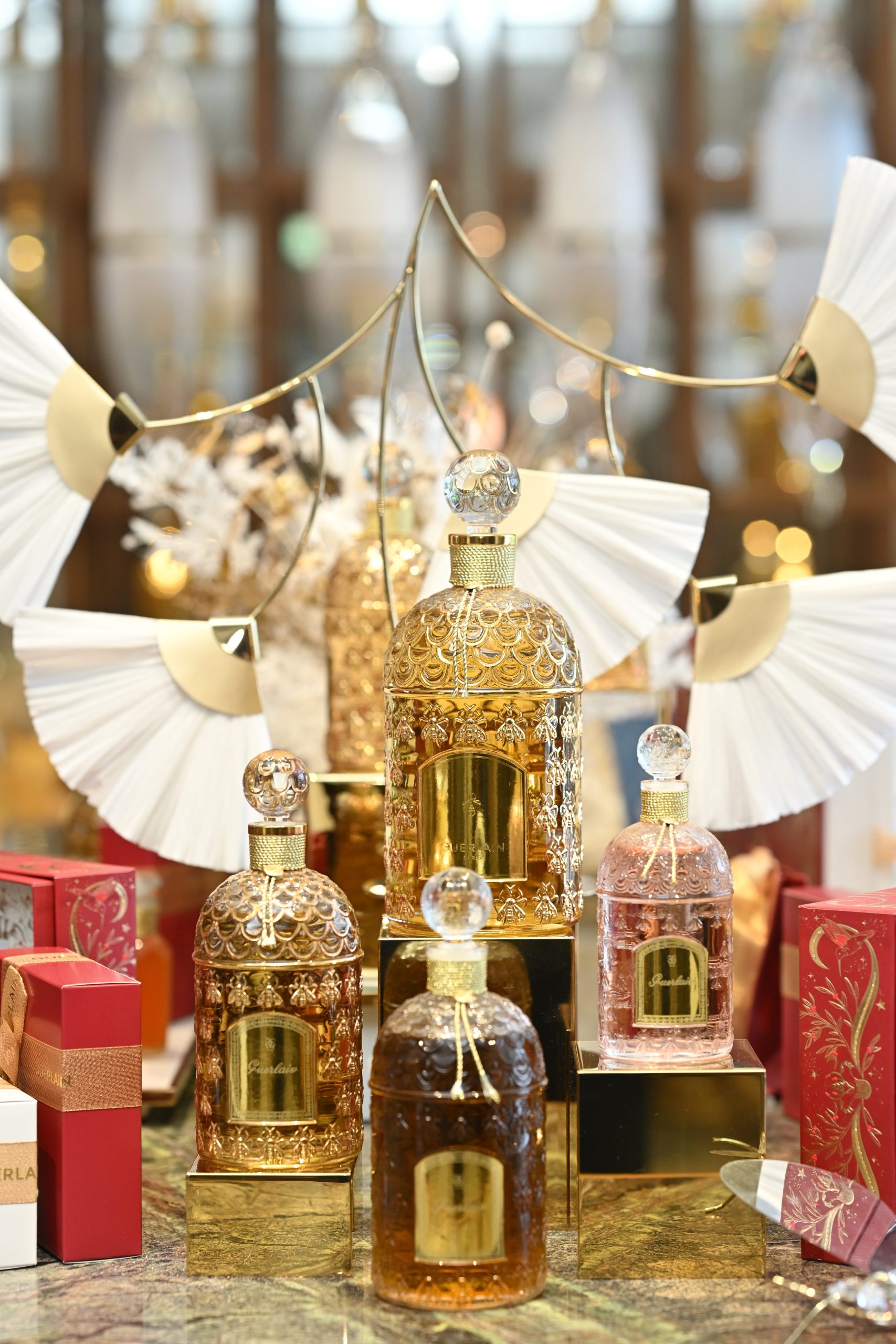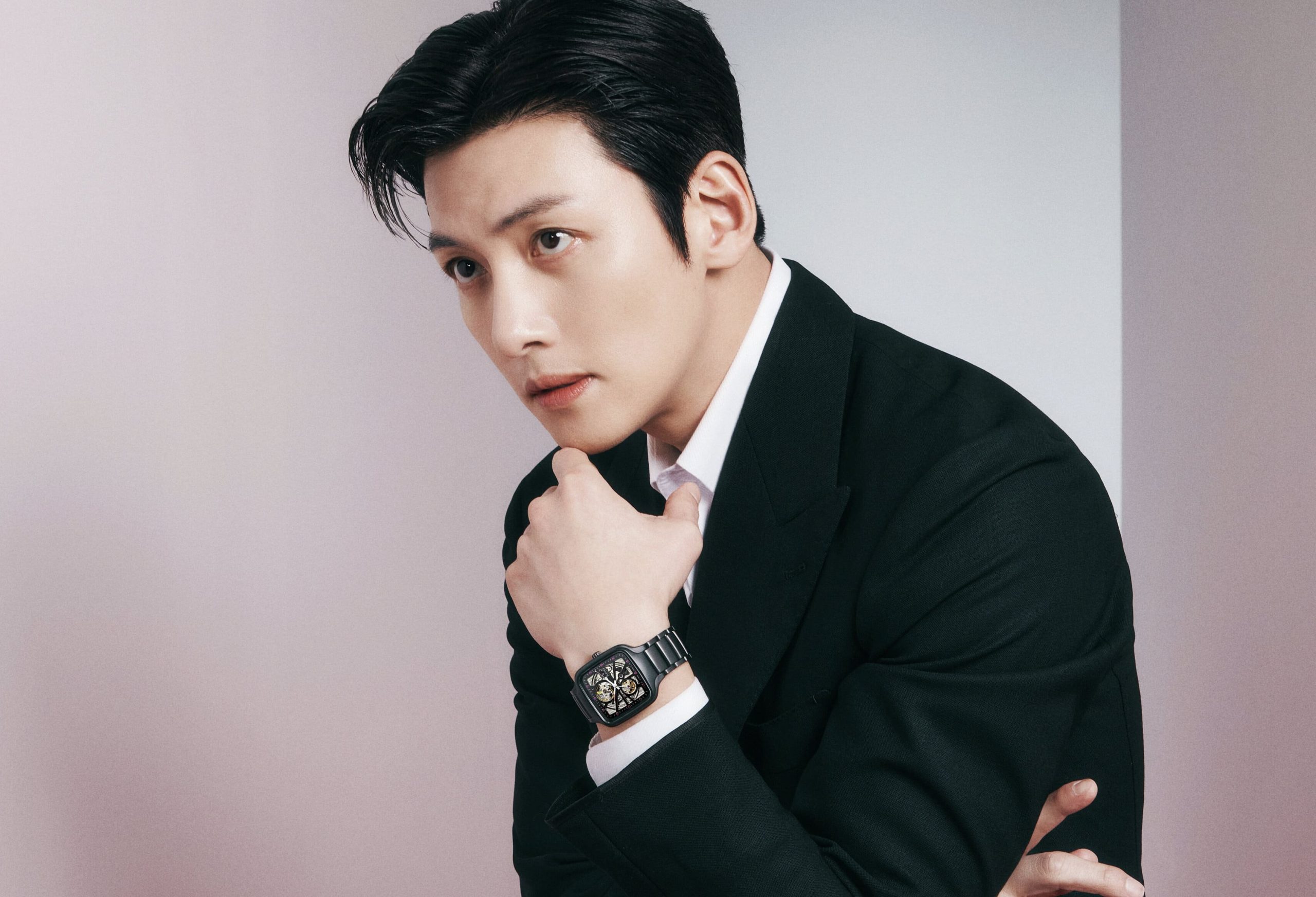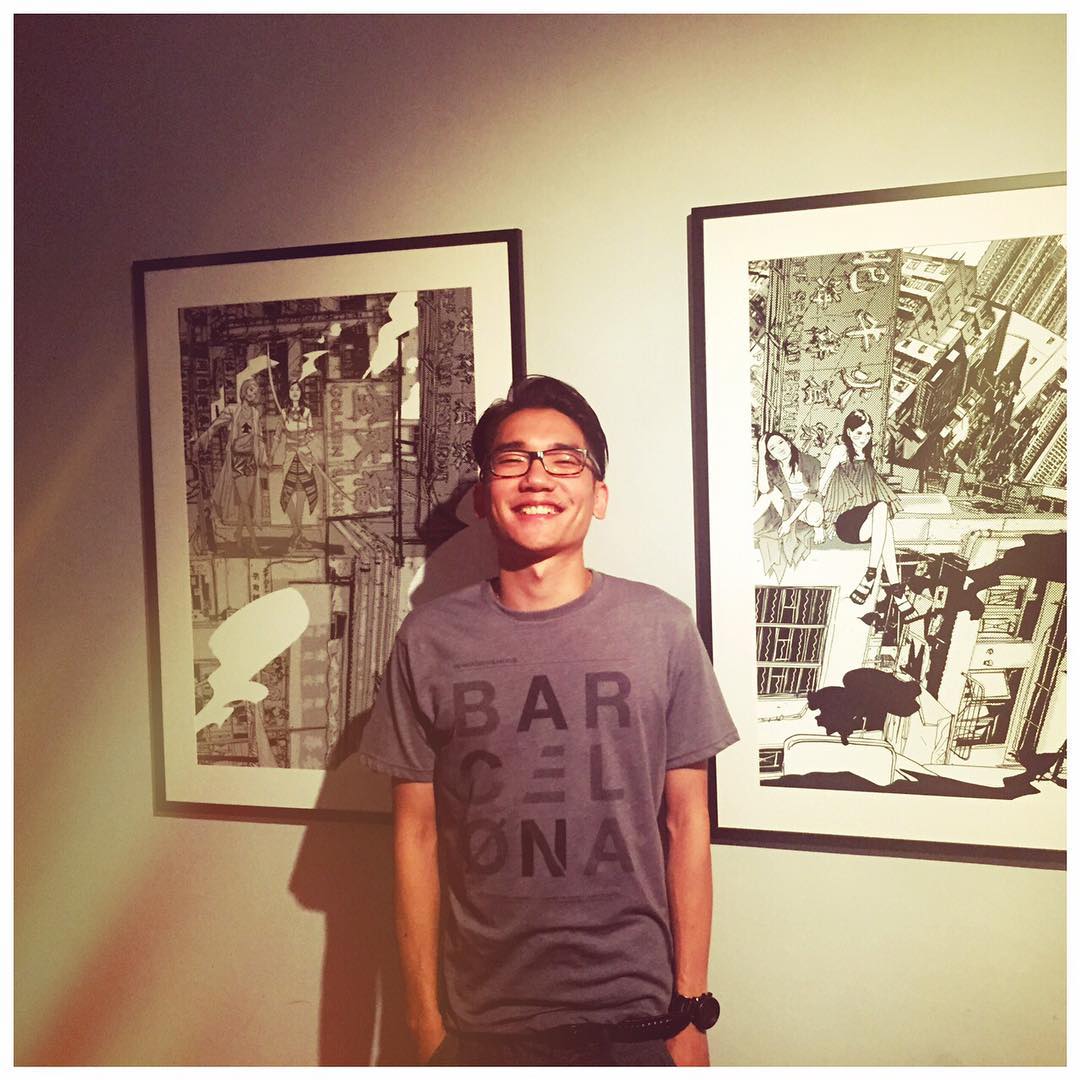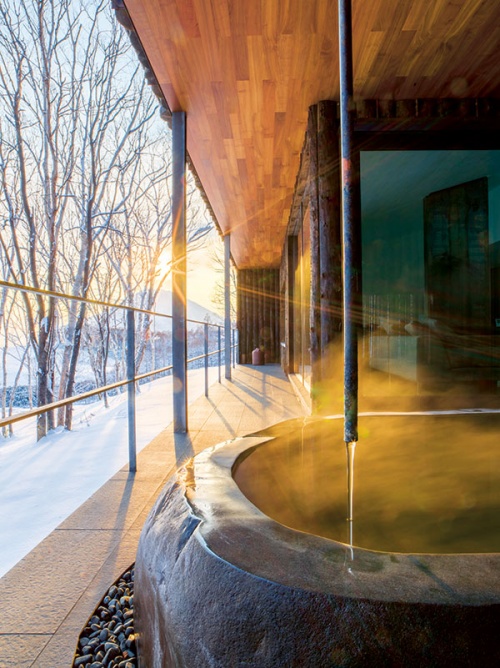
On a frigid spring day, the temperature barely above freezing point, I’m standing outdoors, stark naked, surveying the snow-covered landscape before me. Under a cerulean sky, a crow caws, and tiny buds sprout on bare birch trees. In the distance, the dramatic symmetry of a volcano looms, the notches in its crater rim clearly discernible. Feeling the cold, I ease myself into a hot-spring bath and settle down to admire the stunning scenery as my body soaks in sulphurous water drawn from nearly 1,000 metres below ground.
Moments before, I had checked into Zaborin, an exclusive new ryokan hidden in the foothills of Niseko, on the northern Japanese island of Hokkaido. Ryokans – Japanese inns with centuries-old traditions – are more than just places to stay. They are attractions in themselves. Their original purpose was to give basic lodging to Buddhist monks. In feudal Japan, ryokans became more lavish guest houses. In modern Japan, they have evolved into retreats that distil Japanese culture, where travellers go to bathe in soothing waters, eat exquisite food and commune with nature.
I’m here for some rest and recuperation after a week of late-season skiing through ice and slush instead of over the powdery snow that most people come seeking in this resort area. A trio of kimono-clad women welcome me to an ultra-modern bunker in the woods, a minimalist vision embodied in concrete and glass. Zaborin differs from traditional ryokans, which have rigid rules and confounding etiquette that younger Japanese and foreigners can find forbidding: where it’s OK to wash your private parts in front of complete strangers, yet where it’s a sin to get a single soap sud in an onsen, or hot-spring bath.
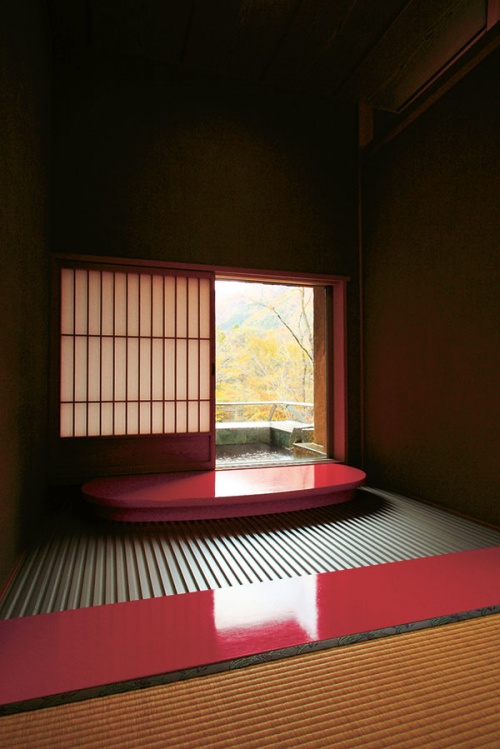
Shouya Grigg, an Englishman who took a Japanese name in deference to his adopted country, is the creative force behind Zaborin. “The concept comes from a mindset of challenging the norm. We have a lot of respect for Japan’s traditions and culture, but at the same time we believe that certain things can be fine-tuned in order to stay in harmony with our environment,” Grigg says.
Once I’m inside, intriguing details catch my eye: a fireplace that forms part of a rock garden, curved tables carved from a single piece of timber, and a cosy library filled with rare books and vintage ornaments. A rusted sculpture here and a peeling screen there express the Japanese notion of wabi-sabi, perfect in their imperfection.
I am shown to my detached villa, one of 15 connected by an enclosed walkway. The accommodation is spartan yet luxe. The timber floors are heated from beneath by pipes carrying hot spring water, and covered with tatami mats. The separate area for sleeping has supremely comfortable futon beds. The villa’s sliding glass walls give views of forest, farmland and the volcano, Mount Yotei. Best of all, every villa has two private onsen, one inside, one outside.
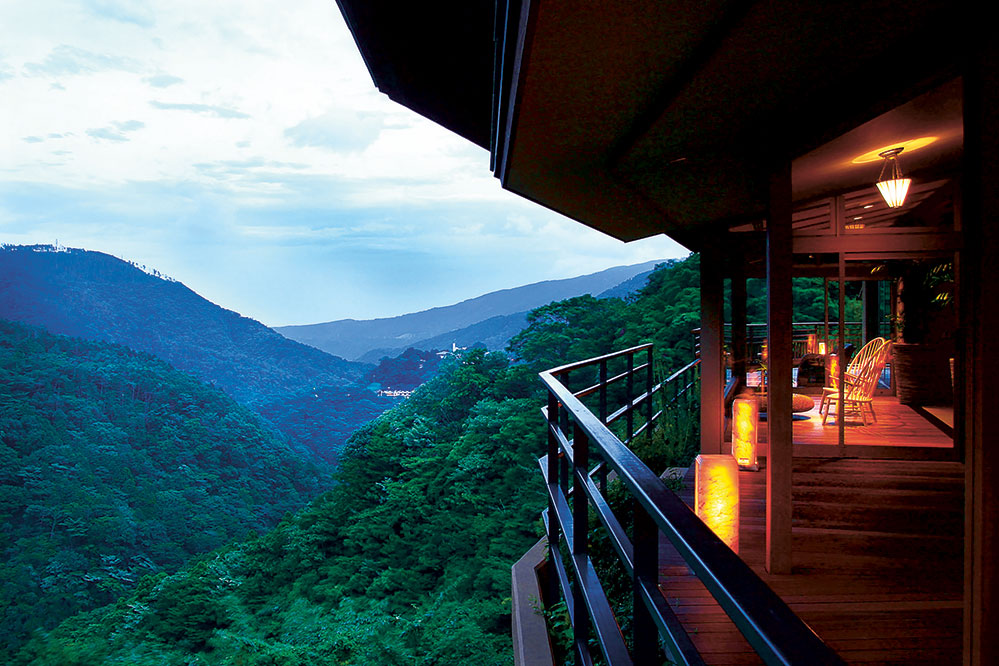
To sample some of the finest food in Japan, stay at a ryokan, where meals usually take the form of kaiseki, feasts of many courses that are in tune with nature. Long before farm-to-table food became fashionable in the West, the Japanese had mastered the application of the concept. The best kaiseki are made with local ingredients in season. They are works of art on the plate and on your palate.
Zaborin Executive Chef Yoshihiro Seno, a native of Hokkaido, serves kita kaiseki, which “is about humility, the purity of taste and origin”, he says. “It’s about a simplicity in look, and most of all in its integrity.” But the simplicity of the presentation cannot conceal the gorgeousness of the lacquer ware and ceramics, and of the food arrayed on it. Dishes may include a baby radish that tastes as if it was picked that morning, or the sweetest crab, or the most tender Wagyu beef, the flavours of which make your taste buds leap up and dance with joy.
There is no need to pack much for a stay at a ryokan. This becomes obvious when I arrive at the Bettei Senjyuan ryokan in the mountainous Tanigawa area, about two hours northwest of Tokyo by train. Checking in at the same time as me were a Japanese couple with no luggage, looking as if they had come straight from the office. Here, as at other ryokans, almost everything you need for a stay is provided, including toiletries, a yukata or casual kimono, and a hanten or short winter coat. The yukata and hanten can be worn wherever you go in a ryokan – whether strolling in the grounds, or going to the onsen, or eating dinner.
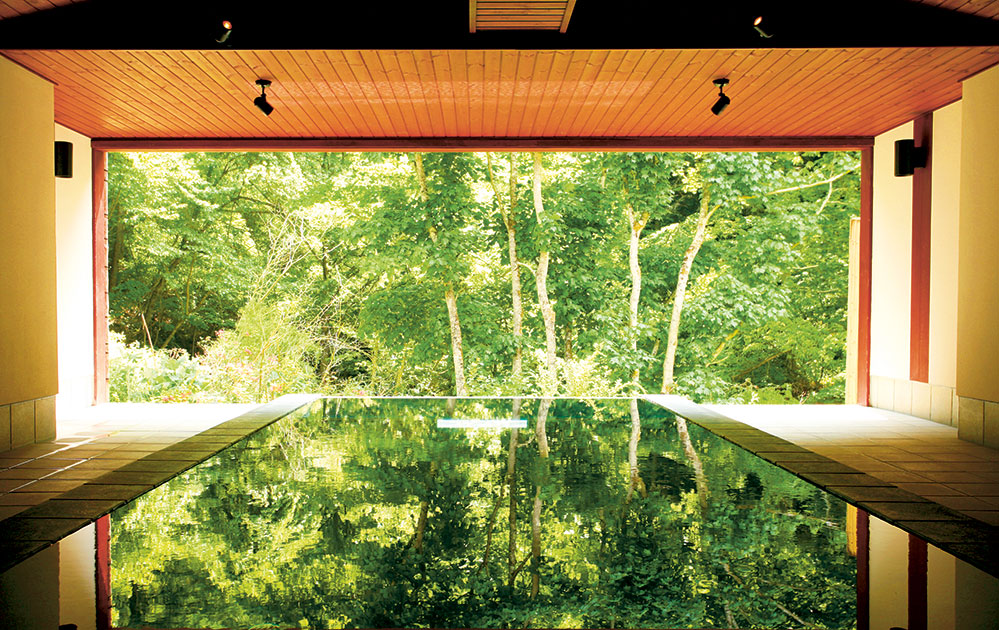
My personal butler escorts me along a corridor formed by glass walls eight metres high and shows me my room. Each of the 18 rooms has an outdoor stone bath giving the bather views of snow-capped Mount Tanigawa framed by lush forest. A yukata is neatly laid out for me and I’m shown how to put it on correctly. On the way down to try the ryokan’s common onsen, I notice features I had overlooked before: straw and chunks of rusted iron embedded in the clay walls; an etched, sketched and painted mural extending 40 metres along one side of the corridor; sliding doors that show off the lace-like pattern of kumiko woodwork; and a tatami mat woven from stainless steel wire.
The common onsen has two separate areas. Each area is used by each gender on alternate days, so men and women can experience both areas, but not together. Tanigawa is a long way south of Niseko, so spring is much more advanced. I venture outside to enjoy the end of the cherry blossom season. Sitting in a rock pool full of steaming water in the midst of an enchanted forest of pink, as a river swelled by newly melted mountain snow rushes by, I am completely transported.
I take my dinner in a private dining room overlooking a garden illuminated by spotlights. The dining room has a sunken floor, allowing the use of low chairs, so diners need not kneel or sit cross-legged at the table. A procession of rustic dishes, each beautifully presented, comes my way. Dinner includes a course of fish and vegetables that I cook myself on my own coal-fired grill. I order two kinds of sake made locally. Each is crisp and refreshing, an ideal accompaniment to the delicate flavours of the kaiseki meal.
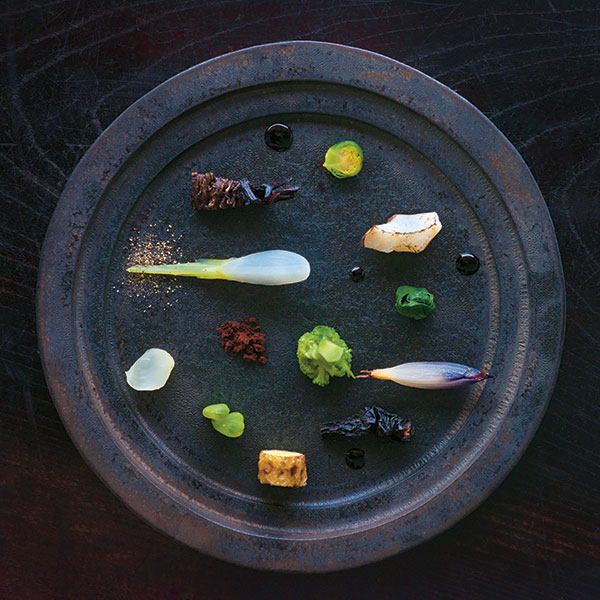
I return to my room, where my futon has been prepared, with pyjamas laid out and a cocoon-like quilt to snuggle under. I wake to the music of birdsong and the tumbling stream. I start my day with a leisurely soak, then breakfast on pickles, grilled fish, rice and miso soup – all standard fare in ryokans.
Most ryokans welcome children, but their quiet, contemplative atmosphere and lack of facilities specifically for the young make them less than ideal for families with small children. Instead, people with a young brood – or those simply wishing to be unconstrained by the formalities of a ryokan – can opt for one of the increasing number of hotels that have most of the aspects of a ryokan that are attractive but none that are offputting.
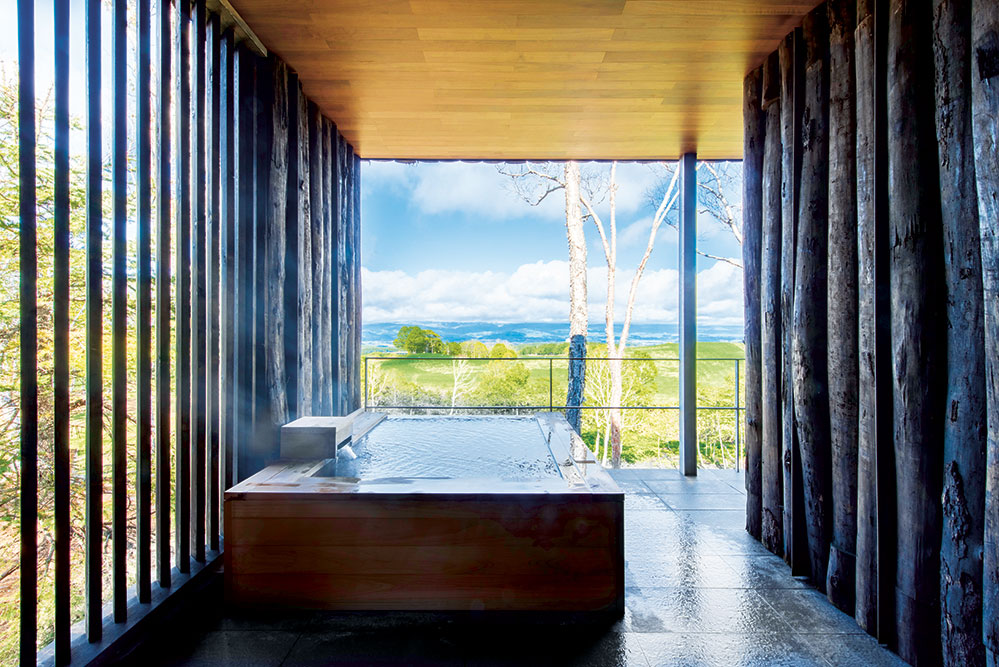
One of the first hotels to fit this bill is the Hyatt Regency Hakone, an 80-room resort in the charming hill town of Gora. Gora’s proximity to Tokyo makes it popular with day-trippers. The hotel has Western-style and Japanese- style beds. If you’re lucky with the weather, you can see Mount Fuji from your room. The hotel has two large common indoor onsen, filled with mineral-rich water from hot springs in the Owakudani valley. I take a complimentary glass of wine in the lounge before dining on a delicious sushi set. The Hyatt Regency Hakone also serves French food and the full range of kaiseki fare.
A conventional hotel offers convenience, but it can never quite match the intimacy, the personal service and the singular essence of a ryokan. I think back to a midnight soak in my outdoor onsen at the Zaborin ryokan. The scene was magical. Light from a half-moon threw the snowy peak of Mount Yotei into relief against the inky sky. A red fox sauntered up, paused to fix me with its gaze and then padded off into the darkness, leaving an imprint in my memory that no mere photograph could ever match.
